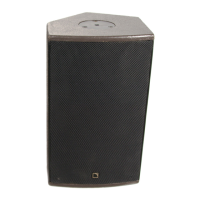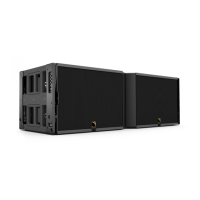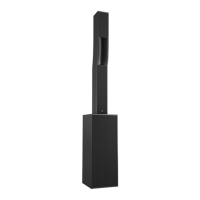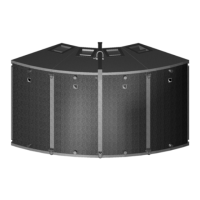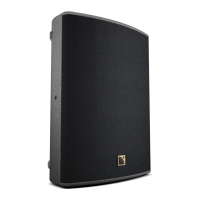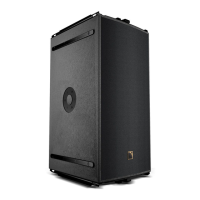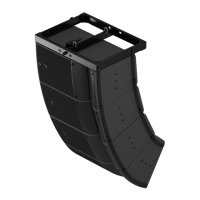MTD 112 4 06/97
.
2.1 THE MULTIPLE SOURCES CONCEPT
Covering an audience with a sound field is the aim of any sound system design. It is rather
easy in very small spaces, where the "Hi-Fi" type of approach is suitable, provided the
available power is sufficient. A stereo pair of loudspeakers is an easy system to install, and
the results are fairly predictable.
In order to cover larger audiences, two avenues are capable of providing satisfying
solutions:
* The coupling of a certain number of sound sources in arrays, each array being in
turn equivalent to one sound source.
* Multiplying the sound sources by dividing the audience in areas which are covered
by individual sources. In this case, the Haas effect is exploited by introducing delay lines
upstream in the system to provide a correct localization.
We consider that the coupling of sound sources in arrays can only be satisfying if it meets
some criterion which have been defined by Christian Heil & Marcel Urban,"Sound fields
radiated by multiple sound sources arrays" AES paper preprint 3269, presented at the 92nd
Convention, Vienna 1992. These criterion are met by our V-DOSC and ARCS products,
designed for large-scale sound reinforcement. In many designs, however, it is practically
impossible to meet these criterion together with a sufficient level of versatility for small to
medium scale applications: If a product is to be arrayable, it typically leads to an enclosure
design that cannot be used in single or very small configurations.
Our approach to versatile small size systems is the one of multiplying sound sources, and
providing delay lines whenever necessary. In this respect, our first design criterion is the
total coherence of each individual source.
This criterion is fully met only with coaxial axisymmetric designs, as already demonstrated
years ago by a famous studio monitor British manufacturer.
Only this type of assembly can provide a smooth transition between the LF and HF ranges,
the directivity of the two transducers at the crossover frequency being the same by
definition.
(Note that it is not the case when a coaxially mounted HF driver is loaded by a small horn
placed inside the LF cone, instead of being loaded by flare of the cone itself).
Further, the true single source at all frequencies, as achieved by a coaxial axisymmetrical
design, is obviously superior in coherence to any combination of two independent sound
sources: even if such independent sources are designed to provide the same directivity
behavior (which is never the case!), these two sources are not located at the same place in
this case.
Some other benefits in terms of quality can be obtained from an axisymmetrical load, as
demonstrated by M.A.Dodd "A wide dispersion constant directivity dual concentric driver",
presented at the 92nd AES Convention, Vienna 1992, preprint n 3257, and by P.Newell
"Round the horn", Studio Sound vol.36 n 3, March 1994.
These benefits can be briefly described as a smooth acoustical impedance loading the
compression driver and a short time window of horn reflections which is much more
acceptable that longer ones due to long horn designs.
Further, the coupling of the wave generated by an axisymmetric sound source, providing a
directivity smoothly increasing with frequency, with the acoustical environment of a typical
auditorium is optimum: The reverberation time, typically, decreases smoothly beyond 1 kHz.
2.PRESENTATION
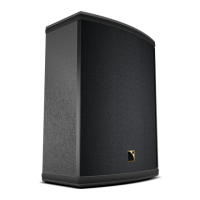
